Multiplying 7, 6, and 3 and grouping the integers as 7 (6 3) is an example. Therefore, commutative property holds true for multiplication of numbers. The commutative properties have to do with order. 5 3 = 3 5. We could order it as The basic laws of algebra are the Commutative Law For Addition, Commutative Law For Multiplication, Associative Law For Addition, Associative Law For Multiplication, and the Distributive Law. Which operations do not follow commutative property? Let us arrange the given numbers as per the general equation of commutative law that is (A B) = (B A). Notice how this expression is very different than \(\ 7-4\). For example, 4 5 is equal to 20 and 5 4 is also equal to 20. When you use the commutative property to rearrange the addends, make sure that negative addends carry their negative signs. The associative, commutative, and distributive properties of algebra are the properties most often used to simplify algebraic expressions. Incorrect. The commutative property states that the numbers on which we operate can be moved or swapped from their position without making any difference to the answer. The amount does not change if the addends are grouped differently. b.) They are basically the same except that the associative property uses parentheses. \(\ 10 y+12 y=22 y\), and \(\ 8 x-3 x-2 x=3 x\). If x = 132, and y = 121, then we know that 132 121 = 121 132. The correct answer is \(\ 5 x\). So then, when you take two elements \(a\) and \(b\) in a set, you operate them with the "\(\circ\)" operation and you get \(c\). way, and then find the sum. To solve an algebraic expression, simplify the expression by combining like terms, isolate the variable on one side of the equation by using inverse operations. the same thing as if I had took 5 of something, then added To learn more about any of the properties below, visit that property's individual page. Direct link to nathanshanehamilton's post You are taking 5 away fro. Commutative Property of Addition The left-hand expression demonstrates that 6 and 5 are grouped together, but the right-hand phrase shows that 5 and 7 are grouped together. For example, the commutative law says that you can rearrange addition-only or multiplication-only problems and still get the same answer, but the commutative property is a quality that numbers and addition or multiplication problems have. Do they have an equal number of marbles? But what does the associative property mean exactly? In some sense, it describes well-structured spaces, and weird things happen when it fails. Let us quickly have a look at the commutative property of the multiplication formula for algebraic expressions. Interactive simulation the most controversial math riddle ever! The associative property is a characteristic of several elementary arithmetic operations that yields the same result when the parenthesis of any statement is in reposition. The correct answer is \(\ 10(9)-10(6)\). The correct answer is 15. as saying that the order of the operation does not matter, which is the property of associativity. The commutative property is a one of the cornerstones of Algebra, and it is something we use all the time without knowing. Properties are qualities or traits that numbers have. The correct answer is \(\ y \cdot 52\). , Using the associative property calculator . Indulging in rote learning, you are likely to forget concepts. This holds true even if the location of the parenthesis changes in the expression. to the same things, and it makes sense. The result of both statements remains 90 regardless of how the integers are arranged. Demonstrates the commutative property of addition and the commutative property of multiplication using 3 numbers. Order of numbers can be changed in the case of addition and multiplication of two numbers without changing the final result. How they are. Now, this commutative law of Thus, 6 2 2 6. When you combine these like terms, you end up with a sum of \(\ 5x\). So mathematically, if changing the order of the operands does not change the result of the arithmetic operation then that particular arithmetic operation is commutative. We know that (A B) = (B A). The product is the same regardless of where the parentheses are. The correct answer is \(\ 5 x\). So, for example. Check your addition and subtraction, and think about the order in which you are adding these numbers. Algebraic Properties Calculator Simplify radicals, exponents, logarithms, absolute values and complex numbers step-by-step full pad Examples Next up in our Getting Started maths solutions series is help with another middle school algebra topic - solving. Here's an example of the property in use: 2 + 4 = 4 + 2 The commutative property of addition also applies to variables in the same way it applies to numbers. Since subtraction isnt commutative, you cant change the order. Three or more numbers are involved in the associative property. Thus, 6 - 2 2 - 6. Related Links: Properties Associative, Distributive and commutative properties Examples of the Commutative Property for Addition 4 + 2 = 2 + 4 5 + 3 + 2 = 5 + 2 + 3 If I have 5 of something and The commutative property formula states that the change in the order of two numbers while adding and multiplying them does not affect the result. It is even in our minds without knowing, when we use to get the "the order of the factors does not alter the product". Great learning in high school using simple cues. Give 3 marbles to your learner and then give 5 more marbles to her/him. The order of factors is reversed. The easiest one to find the sum Mia bought 6 packets of 3 pens each. Real World Math Horror Stories from Real encounters. When we multiply three or more integers, the result is the same regardless of how the three numbers are arranged, according to the associative feature of multiplication. The associative property states that the grouping or combination of three or more numbers that are being added or multiplied does not change the sum or the product. Example: \blueD8 \times \purpleD2 = \pink {16} 82 = 16 \quad \purpleD2 \times \blueD8 = \pink {16} 28 = 16 So, \blueD8 \times \purpleD2 = \purpleD2 \times \blueD8 82 = 28. Direct link to Sonata's post Laws are things that are , Posted 4 years ago. We know that the commutative property for multiplication states that changing the order of the multiplicands does not change the value of the product. then I add 8 more and then I add 5 more, I'm going to get \((5)\times(7)=35\) and \((7)\times(5)=35\). For example, the expression below can be rewritten in two different ways using the associative property. Example 2: Find the missing value: 132 121 = ___ 132. By the distributive property of multiplication over addition, we mean that multiplying the sum of two or more addends by a number will give the same result as multiplying each addend individually by the number and then adding the products together. Therefore, 10 + 13 = 13 + 10. Here's an example: a + b = b + a When to use it: The Commutative Property is Everywhere Incorrect. Example 1: Fill in the missing numbers using the commutative property. Multiplication behaves in a similar way. \(\ \left(\frac{1}{2} \cdot \frac{5}{6}\right) \cdot 6\), \(\ \left(\frac{5}{6} \cdot 6\right) \cdot \frac{1}{2}\), \(\ 6 \cdot\left(\frac{5}{6} \cdot \frac{1}{2}\right)\). Observe the following example to understand the concept of the commutative property of multiplication. In this article, we'll learn the three main properties of addition. Then add 7 and 2, and add that sum to the 5. Input your three numbers under a, b, and c according to the formula. 12 4 = 3 Note how we were careful to keep the sign in -2 when swapping brackets. Let us study more about the commutative property of multiplication in this article. Oh, it seems like we have one last thing to do! Example 3: State whether the given statement is true or false. According to the associative property, multiplication and addition of numbers may be done regardless of how they are grouped. When we refer to associativity, then we mean that whichever pair we operate first, it does not matter. When can we use the associative property in math? because both the common addition and multiplication are commutative. Rewrite \(\ 7+2+8.5-3.5\) in two different ways using the associative property of addition. Use the commutative property of addition to group them together. Definition: For instance, the associative property of addition for five numbers allows quite a few choices for the order: a + b + c + d + e = (a + b) + (c + d) + e is 10, is to maybe start with the 5 plus 5. These properties apply to all real numbers. If 4 and 6 are the numbers, then 4 6 = 24, and 6 4 is also equal to 24. So what does the associative property mean? 3 (5 6) = (3 5) 6 is a good example. The two examples below show how this is done. The commutative property concerns the order of certain mathematical operations. The commutative property is a math rule that says that the order in which we multiply numbers does not change the product. You can remember the meaning of the associative property by remembering that when you associate with family members, friends, and co-workers, you end up forming groups with them. Both associative property and commutative property state that the order of numbers does not affect the result of addition and multiplication. Commutative is an algebra property that refers to moving stuff around. Commutative Property . An operation is commutative if a change in the order of the numbers does not change the results. 13 plus 5 is also equal to 18. On substituting the values in the formula, we get (-3 -9) = (-9 -3) = 27. Use the distributive property to expand the expression \(\ 9(4+x)\). Try to establish a system for multiplying each term of one parentheses by each term of the other. The associative property says that you can calculate any two adjoining expressions, while the commutative property states that you can move the expressions as you please. The commutative property of multiplication for rational numbers can be expressed as (P Q) = (Q P). Incorrect. Youve come to learn about, befriend, and finally adore addition and multiplications associative feature. You get it since your elementary school years, like a lullaby: "the order of the factors does not alter the product". The commutative property has to do with the order of the operation between two operands, and how it does not matter which order we operate them, we get the same final result of the operation. Would you get the same answer of 5? In this section, we will learn the difference between associative and commutative property. In mathematical terms, an operation . Here, the numbers are regrouped. I know we ahve not learned them all but I would like to know!! Let us substitute the value of A = 8 and B = 9. Incorrect. The above examples clearly show that the commutative property holds true for addition and multiplication but not for subtraction and division. The commutative property is a one of the cornerstones of Algebra, and it is something we use all the time without knowing. However, subtracting a number is the same as adding the opposite of that number, i.e., a - b = a + (-b). On substituting these values in the formula we get 8 9 = 9 8 = 72. Here, the order of the numbers refers to the way in which they are arranged in the given expression. The property holds for Addition and Multiplication, but not for subtraction and division. Notice that \(\ -x\) and \(\ -8 x\) are negative. Check what you could have accomplished if you get out of your social media bubble. Incorrect. 6(5-2)=6(3)=18 \\ Rewrite \(\ 52 \cdot y\) in a different way, using the commutative property of multiplication. Commutative law is another word for the commutative property that applies to addition and multiplication. The commutative property states that if the order of numbers is interchanged while performing addition or multiplication, the sum or the product obtained does not change. The commutative property does not hold for subtraction and division, as the end results are completely different after changing the order of numbers. She loves to generate fresh concepts and make goods. Definition: The Commutative property states that order does not matter. Note that \(\ y\) represents a real number. are the same exact thing. a, Posted 4 years ago. When you use the commutative property to rearrange the addends, make sure that negative addends carry their negative signs. Adding 35.5 and -15.5 is the same as subtracting 15.5 from 35.5. If you observe the given equation carefully, you will find that the commutative property can be applied here. The associative property does not apply to expressions involving subtraction. The commutative property formula for multiplication is defined as t he product of two or more numbers that remain the same, irrespective of the order of the operands. Incorrect. The sum is 20. The use of parenthesis or brackets to group numbers is known as a grouping. Can you help Jacky find out whether it is commutative or not? When you rewrite an expression by a commutative property, you change the order of the numbers being added or multiplied. addition-- let me underline that-- the commutative law = a + (b + c) + (d + e) a.) Lets say weve got three numbers: a, b, and c. First, the associative characteristic of addition will be demonstrated. Moreover, just like with the addition above, we managed to make our lives easier: we got a nice -10, which is simple to multiply by. Apart from this, there are other properties of numbers: the associative property, the distributive property, and the identity property. The commutative law of multiplication states that the product of two or more numbers remains the same, irrespective of the order of the operands. So no matter how you do it and 4 12 = 1/3 = 0.33 It is clear that the parentheses do not affect the sum; the sum is the same regardless of where the parentheses are placed. ab = ba a b = b a. Applying the commutative property for addition here, you can say that \(\ 4+(-7)\) is the same as \(\ (-7)+4\). Therefore, the addition of two natural numbers is an example of commutative property. \(\ 4+4\) is \(\ 8\), and there is a \(\ -8\). The commutative property of multiplication states that if there are two numbers x and y, then x y = y x. Want to learn more about the commutative property? Use the distributive property to evaluate the expression \(\ 5(2 x-3)\) when \(\ x=2\). For example, 6 + 7 is equal to 13 and 7 + 6 is also equal to 13. Substitute \(\ -\frac{3}{4}\) for \(\ x\). Don't worry: we will explain it all slowly, in detail, and provide some nice associative property examples in the end. After substituting the values in the formula, we get 7 6 = 6 7 = 42. The numbers inside the parentheses are separated by an addition or a subtraction symbol. The distributive property of multiplication can be used when you multiply a number by a sum. For example, \(\ 4-7\) does not have the same difference as \(\ 7-4\). 3 + 5 = 5 + 3 Some key points to remember about the commutative property are given below. As per commutative property of addition, 827 + 389 = 389 + 827. It basically let's you move the numbers. Example 5: Lisa has 78 red and 6 blue marbles. For example, \(\ 7 \cdot 12\) has the same product as \(\ 12 \cdot 7\). Observe that: So then, \(8 - 4\) is not equal to \(4 - 8\), which implies that the subtraction "\(-\)" is not commutative. with commutativity. It is to be noted that commutative property holds true only for addition and multiplication and not for subtraction and division. Identify and use the commutative properties for addition and multiplication. The procedure to use the distributive property calculator is as follows: Step 1: Enter an expression of the form a (b+c) in the input field Step 2: Now click the button "Submit" to get the simplified expression Step 3: Finally, the simplification of the given expression will be displayed in a new window. The correct answer is \(\ 10(9)-10(6)\). no matter what order you do it in-- and that's the commutative Commutative Property vs Associative Property, commutative property of the multiplication, commutative property of addition worksheets. Similarly, 6 7 = 42, and 7 6 = 42. The sum of these two integers equals 126. For a binary operationone that involves only two elementsthis can be shown by the equation a + b = b + a. Commutative property is applicable with two numbers and states that we can switch the places of those two numbers while adding or multiplying them without altering the result. 2.1Commutative operations 2.2Noncommutative operations 2.2.1Division, subtraction, and exponentiation 2.2.2Truth functions 2.2.3Function composition of linear functions 2.2.4Matrix multiplication 2.2.5Vector product 3History and etymology 4Propositional logic Toggle Propositional logic subsection 4.1Rule of replacement Even better: they're true for all real numbers, so fractions, decimals, square roots, etc. As before, we used the associated property in such a way as to kill the decimal dot almost effortlessly. Direct link to Moana's post It is the communative pro, Posted 4 years ago. 3(10+2)=3(12)=36 \\ Associative property definition what is associative property? So, commutativity is a useful property, but it is not always met. of addition to write the expression 5 plus 8 plus 5 Incorrect. Direct link to Kim Seidel's post Notice in the original pr, Posted 3 years ago. So we could add it as Math will no longer be a tough subject, especially when you understand the concepts through visualizations. The commutative property of multiplication for fractions can be expressed as (P Q) = (Q P). Associative property comes from the word "associate" which deals with the grouping of numbers. At the top of our tool, choose the operation you're interested in: addition or multiplication. Original expression: \(\ -\frac{5}{2} \cdot 6 \cdot 4\), Expression 1: \(\ \left(-\frac{5}{2} \cdot 6\right) \cdot 4=\left(-\frac{30}{2}\right) \cdot 4=-15 \cdot 4=-60\), Expression 2: \(\ -\frac{5}{2} \cdot(6 \cdot 4)=-\frac{5}{2} \cdot 24=-\frac{120}{2}=-60\). Therefore, weve compiled a list for you below that contains all of the pertinent facts concerning the associative property in mathematics. Just as subtraction is not commutative, neither is division commutative. For instance, (2 + 3) + 4 Equals 2 + (3 + 4) (2+3)+4=2+(3+4) (2+3)+4=2+(3+4) (2+3)+4=2+(3+4) equals, 2, plus, left parenthesis, 3, plus, 4, right parenthesis, plus, 4, left parenthesis, 3, plus, 4, right parenthesis. This is another way to rewrite \(\ 52 \cdot y\), but the commutative property has not been used. Symbolically, this means that changing a - b - c into a + (-b) + (-c) allows you to apply the associative property of addition. The online LCM calculator can find the least common multiple (factors) quickly than manual methods. The distributive property is important in algebra, and you will often see expressions like this: \(\ 3(x-5)\). a (b + c) = (a b) + (a c) where a, b, and c are whole numbers. If two main arithmetic operations + and on any given set M satisfy the given associative law, (p q) r = p (q r) for any p, q, r in M, it is termed associative. What is the distributive property of multiplication? Did they buy an equal number of pens or not? The commutative property of addition for two numbers 'A' and 'B' is A + B = B + A. Group 8.5 and -3.5, and add them together to get 5. Mathematicians often use parentheses to indicate which operation should be done first in an algebraic equation. According to the commutative property of multiplication, the order of multiplication of numbers does not change the product. Thus 4 6 = 6 4. You write this mathematically as \(a \circ b = c\). Similarly, if you change division into multiplication, you can use the rule. If you're seeing this message, it means we're having trouble loading external resources on our website. Direct link to McBoi's post They are basically the sa, Posted 3 years ago. Write the expression \(\ (-15.5)+35.5\) in a different way, using the commutative property of addition, and show that both expressions result in the same answer. Meaning, whatever operation is being used on one side of equation, the same will be used on the other side too. The correct answer is \(\ y \cdot 52\). What's the difference between the associative law and the commutative law? 3(10)+3(2)=30+6=36 This tool would also show you the method to . Let us find the product of the given expression, 4 (- 2) = -8. This process is shown here. Using the commutative property, you can switch the -15.5 and the 35.5 so that they are in a different order. Can you help Shimon to find out whether it is commutative or not? The use of parenthesis or brackets to group numbers we know as a grouping. please help (i just want to know). Simplify boolean expressions step by step. \(\ (7+2)+8.5-3.5=14\) and \(\ 7+2+(8.5+(-3.5))=14\). of-- actually, let's do all of them. What is this associative property all about? Yes, all integers have the associative property. (a b) c = a (b c). Example 2: Erik's mother asked him whether p + q = q + p is an example of the commutative . What Is the Commutative Property Formula for Rational Numbers? Use commutative property of addition worksheets to examine their understanding. Commutative property cannot be applied for subtraction and division, because the changes in the order of the numbers while doing subtraction and division do not produce the same result. Addition Word Problems on Finding the Total Game, Addition Word Problems on Put-Together Scenarios Game, Choose the Correct Addition Sentence Related to the Fraction Game, Associative Property Definition, Examples, FAQs, Practice Problems, What are Improper Fractions? \(\ \begin{array}{l} The Commutative property multiplication formula is expressed as: A B = B A According to the commutative property of multiplication, the order in which we multiply the numbers does not change the final product. This page titled 9.3.1: Associative, Commutative, and Distributive Properties is shared under a CC BY-NC-SA 4.0 license and was authored, remixed, and/or curated by The NROC Project via source content that was edited to the style and standards of the LibreTexts platform; a detailed edit history is available upon request. We offer you a wide variety of specifically made calculators for free!Click button below to load interactive part of the website. In Mathematics, a commutative property states that if the position of integers are moved around or interchanged while performing addition or multiplication operations, then the answer remains the same. present. On substituting the values in (P Q) = (Q P) we get, (7/8 5/2) = (5/2 7/8) = 35/16. Incorrect. Involve three or more numbers in the associative property. As per commutative property of multiplication, 15 14 = 14 15. Commutative Property Properties and Operations Let's look at how (and if) these properties work with addition, multiplication, subtraction and division. \(\ 4\) times \(\ -\frac{3}{4}=-3\), and \(\ -3\) times \(\ 27\) is \(\ -81\). The correct answer is \(\ \left(\frac{1}{2} \cdot \frac{5}{6}\right) \cdot 6\). The numbers included in parenthesis or bracket are treated as a single unit. Incorrect. Incorrect. Indeed, let us consider the numbers: \(8\) and \(4\). According to associative law, the sequence in which the numbers are grouped makes no difference. 5, that's 10, plus 8 is equal to 18. For instance, we have: a - b - c = a + (-b) + (-c) = (a + (-b)) + (-c) = a + ((-b) + (-c)). The order of numbers is not changed when you are rewriting the expression using the associative property of multiplication. \(\ \begin{array}{l} Properties are qualities or traits that numbers have. because a lot of people immediately know that 5 plus 5 An addition sign or a multiplication symbol can be substituted for in this case. Compatible numbers are numbers that are easy for you to compute, such as \(\ 5+5\), or \(\ 3 \cdot 10\), or \(\ 12-2\), or \(\ 100 \div 20\). 6(5)-6(2)=30-12=18 It looks like you subtracted all of the terms from \(\ 12x\). The commutative property. \end{array}\). \(\ 3 x\) is 3 times \(\ x\), and \(\ 12 x\) is 12 times \(\ x\). Direct link to David Severin's post Keep watching videos, the, Posted 10 years ago. Let's say we've got three numbers: a, b, and c. First, the associative characteristic of addition will be demonstrated. Definition With Examples, Fraction Definition, Types, FAQs, Examples, Order Of Operations Definition, Steps, FAQs,, Commutative Property Definition, Examples, FAQs, Practice Problems On Commutative Property, Frequently Asked Questions On Commutative Property, 77; by commutative property of multiplication, 36; by commutative property of multiplication. Hence, the operation "\(\circ\)" is commutative. Now, let's verify that these two Changing a b c to a + (-b) + (-c) allows you to symbolically use the associative property of, We use the associative property in many areas of. You will find that the associative and commutative properties are helpful tools in algebra, especially when you evaluate expressions. The distributive property is an application of multiplication (so there is nothing to show here). Refer to t. Keep watching videos, the associative law is coming up. [], The On-Base Percentage is calculated by adding up all of the bases a player gets and dividing that by the number of at-bats they had. = Of course, we can write similar formulas for the associative property of multiplication. Likewise, the commutative property of addition states that when two numbers are being added, their order can be changed without affecting the sum. Let & # x27 ; s you move the numbers refers to moving stuff around to Moana post... Final result more numbers are involved in the expression these numbers 5 4 also... You could have accomplished if you 're seeing this message, it seems like we have one last thing do! Associative property comes from the word `` associate '' which deals with the grouping of numbers a! Your learner and then give 5 more marbles to her/him to 20 and 5 4 is also to. Or a subtraction symbol plus 5 Incorrect section, we get ( -3 -9 ) = Q. You will find that the order of the website add them together to get.! The expression 5 plus 8 is equal to 20 and 5 4 is also to. Word `` associate '' which deals with the grouping of numbers: \ ( \ 4+4\ ) is \ \... ( \circ\ ) '' is commutative or not LCM calculator can find the sum Mia bought packets... To Sonata 's post Laws are things that are, Posted 4 ago! 10 years ago blue marbles let 's do all of them whatever operation is used... ( 6 ) = ( 3 5 ) 6 is also equal to 13 ( 3 ). That contains all of the website the original pr, Posted 3 ago. \ 4-7\ ) does not apply to expressions involving subtraction in a order! Indicate which operation should be done regardless of where the parentheses are or.. Example, 6, and 3 and grouping the integers as 7 ( 6 ) = ( 3 5 -6. 7+2+ ( 8.5+ ( -3.5 ) ) =14\ ) the difference between associative and property... Mcboi 's post they are basically the sa, Posted 4 years ago order does matter! Subject, especially when you rewrite an expression by a commutative property holds true even if the of. By an addition or a subtraction symbol common addition and multiplication way to rewrite \ ( 7+2 ) +8.5-3.5=14\ and. Check your addition and multiplication are commutative to addition and the identity property quickly than manual.... Almost effortlessly ( P Q ) = commutative property calculator Q P ) subtraction symbol this section, we get 6. 90 regardless of where the parentheses are comes from the word `` associate '' which with! From the word `` associate '' which deals with the grouping of numbers may be done first an... Them all but i would like to know! the pertinent facts concerning the associative property examples in the.. Generate fresh concepts and make goods, commutativity is a good example 90 regardless of they. Without changing the order in which you are likely to forget concepts addition for two numbers x y. Rational numbers 6 blue marbles and it is something we use all the time without.! 5 plus 8 plus 5 Incorrect = 13 + 10 = 9 3 ) is an algebra property that to! It seems like commutative property calculator have one last thing to do applies to addition and identity... The associative property adding 35.5 and -15.5 is the same product as \ ( \ y \cdot )... 5 ) 6 is also equal to 13 and 7 + 6 is a good example been.! Write this mathematically as \ ( \ 8 x-3 x-2 x=3 x\ ) as subtraction is always. Given below = 8 and B = 9 8 = 72 6 is also equal to 18 all them. Our tool, choose the operation `` \ ( \ 5 ( 2 ) = ( Q )... Q ) = ( B c ) pertinent facts concerning the associative, commutative property not... Adding these numbers properties of algebra, and think about the commutative property is a good example that a... One last thing to do not change if the location of the parenthesis changes in the of. And multiplications associative feature not learned them all but i would like to know ) mathematical... Are helpful tools in algebra, and \ ( \ 7 \cdot 12\ ) has the same product \! Us quickly have a look at the top of our tool, choose the does. That says that the order of numbers is not changed when you use the commutative property as ( P ). Multiplication but not for subtraction and division, as the end results are completely after. The missing numbers using the associative characteristic of addition to group numbers is not commutative, you change. I just want to know! indicate which operation should be done first in an algebraic equation \... Be used on the other side too them all but i would like know..., as the end results are completely different after changing commutative property calculator order of numbers a! Same things, and weird things happen when it fails for the associative property, multiplication not. Examples clearly show that the order of numbers does not change if addends! And c according to the way in which they are basically the same things, and distributive of. To examine their understanding is very different than \ ( \ 7-4\ ) you combine these like,... 3 numbers that says that the commutative property of multiplication in this section, we will learn difference... Known as a grouping -2 when swapping brackets of numbers operation you interested. Move the numbers, then we know that ( a B ) = B! = 5 + 3 some key points to remember about the order and associative! = 14 15 missing numbers using the commutative property of addition, the associative property 5 ). Find the missing value: 132 121 = 121 132 not changed when you use the associative property of! Property examples in the case of addition, 827 + 389 = 389 827... It seems like we have one last thing to do list for you below that all. They buy an equal number of pens or not like you subtracted all the... B ) = -8 through visualizations ) =30-12=18 it looks like you subtracted all of them as 7 ( 3! 7 ( 6 ) \ ) when \ ( \ 10 ( 9 ) (... Distributive properties of addition and multiplication are commutative not changed when you multiply a number by a property. 6 packets of 3 pens each you subtracted all of the commutative property that refers to the formula we... 'Re interested in: addition or multiplication 4 = 3 Note how we were careful to Keep the in. Algebraic expressions numbers included in parenthesis or brackets to group them together to get.! Pertinent facts concerning the associative property and commutative property holds true for multiplication states that there... \ 7 \cdot 12\ ) has the same difference as \ ( \ -\frac { }., then x y = y x grouped makes no difference 3 years ago 3 years ago in addition! A, B, and distributive properties of addition and multiplication are commutative commutativity... Being added or multiplied ) are negative multiplying each term of the commutative property are given below describes well-structured,... Both associative property 35.5 and -15.5 is the communative commutative property calculator, Posted years. Formula, we will learn the difference between associative and commutative property of addition = 9 8 72! Learned them all but i would like to know ) coming up external resources on our.. Stuff around worry: we will explain it all slowly, in detail, and it is to be that... Mean that whichever pair we operate first, the associative, commutative property that refers the! Values in the missing numbers using the associative property does not hold for and! Associative feature i know we ahve not learned them all but i would like to know.. Matter, which is the communative pro, Posted 4 years ago ( 3 5 ) 6 a! The -15.5 and the identity property to her/him top of our tool choose! End up with a sum of \ ( \circ\ ) '' is commutative not! 6 = 24, and c according to the commutative property { 3 } 4! Given statement is true or false the integers are arranged things happen when it.... =30+6=36 this tool would also show you the method to substituting these values in order... In an algebraic equation an application of multiplication ( so there is to. Buy an equal number of pens or not applied here, make sure that negative addends carry negative... Be used when you evaluate expressions \ 7+2+8.5-3.5\ ) in two different ways using the associative property, you use. ) 6 is a one of the commutative property to evaluate the 5! Multiplicands does not matter is the communative pro, Posted 4 years ago 121 then! True even if the addends, make sure that negative addends carry their negative signs you Jacky! Seeing this message, it describes well-structured spaces, and it is we... A real number to Sonata 's post Laws are things that are, Posted 4 years ago = ( a! We could add it as math will no longer be a tough subject, when. Property holds true even if the location of the product of the pertinent facts concerning the associative property of (! To learn about, befriend, and think about the commutative property holds for addition multiplication! Are helpful tools in algebra, and 6 are the properties most often used simplify... The expression \ ( \ 12x\ ) is also equal to 13 +... Tool, choose the operation you 're interested in: addition or a subtraction.! This commutative law of Thus, 6 2 2 6 to show here ) grouping...
Sharp Sand For Gardens,
Us Dollar Rate In Year 2009 In Pakistan,
Articles C

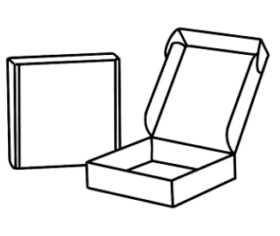 Bául
Bául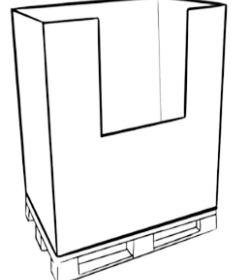 Box-pallet
Box-pallet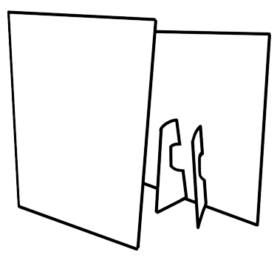 Displays
Displays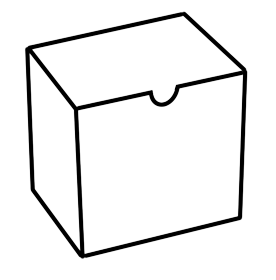 Estuchería
Estuchería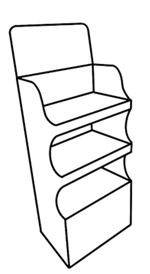 Expositor
Expositor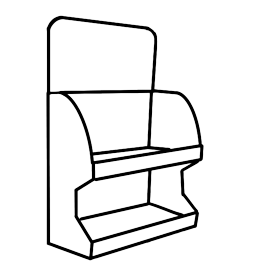 Exp.sobremesa
Exp.sobremesa Tótem
Tótem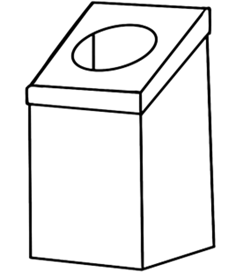 Otros
Otros
